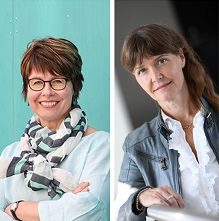
Programme Directors: The importance of ensuring the continuity of experiments started in the course of research projects
The end of project funding often also means the end of experiments and the dissemination of lessons learned and causes the partnership networks created in the course of the project to fall apart. Programme directors Eveliina Saari and Riitta Kosonen explore different ways to protect the legacy of projects and keep up the momentum after funding ends.
Strategic research is all about social impact and interaction across the life cycle of projects. In addition to influencing society, the Academy of Finland’s strategic research projects have inspired experiments that make it possible to look for and test new kinds of solutions to the challenges facing society and to study their impact. This is very much on trend, as the last two Finnish Governments have both advocated a culture of experimentation as a way forward.
The three-year research projects that came to an end in the summer of 2019 involved developing new digital applications and group-based approaches to preventing type 2 diabetes, faster recovery from the strain of work, intervening in mental health issues at an early stage and combatting social exclusion among different population groups. Projects relating to immigration successfully introduced a number of new ways to promote the integration and employment of immigrants with the help of mentoring and personalised motivational techniques. Urban research experts ran experimental residents’ workshops to help plan the Hiedanranta development in Tampere.
Research projects provide the best possible platform and support network for these kinds of experiments. They make it possible to test new services with real users and learn what works and what does not. Research projects also enable the systematic evaluation of experimental approaches. They have taught us that it is worth involving the operators who provide the resources in the evaluation process in order to demonstrate to them the potential of the new approaches and to motivate them to disseminate the lessons learned from the experiments. However, the full-scale deployment of even the most promising experiments is often frustrated by the end of project funding. The sudden end of funding towards an experimental research project can come as a surprise to those implementing the results in practice.
So how can the continuity of these kinds of experiments be promoted? Experiments that have business potential may be eligible for further funding from, for example, Business Finland. This, however, requires a researcher who is willing to turn entrepreneur. Most researchers prefer to carry on with their research rather than experimenting with the results on a broader scale. The wider adoption of new social operating models, on the other hand, hinges on political will and access to common resources. Non-governmental organisations have recently been calling attention to the need to channel more funding towards these so-called social innovations. Impact assessments could also promote the dissemination of lessons learned from experiments.
One good example of a new approach developed in the course of a strategic research project that has a promising future is the operating model built by the StopDia team together with health care organisations. It consists of an electronic diabetes risk assessment, an application that helps people to make small adjustments to their lifestyles, and group-based mentoring. The impact of the StopDia approach has been evaluated with the help of approximately 3,000 individuals at risk of diabetes. It is clear that positive experiences and raising the profile of successful experiments make it more likely for experimental approaches to become standard practices among those who participate in piloting. However, getting the entire country behind a new approach can be challenging without the support of a new research project.
In the context of urban planning, one good example is the Hiedanranta development in Tampere, where a research team known as Dwellers in Agile Cities ran a range of experimental workshops, such as one that led to the construction of a public sauna, in cooperation with the city council and local residents. Workshops are one example of an experimental approach, but most experiments in the area of urban development are longer-term processes that require researchers to play an active role as both producers and disseminators of new information. The experimental development of Hiedanranta continues under the auspices of the strategic ORSI and CICAT research projects, albeit that the focus has shifted slightly.
The lessons learned from the Academy of Finland’s strategic research projects show that Finland should invest in funding instruments for supporting and studying the wider application of promising social experiments. The kinds of systematic evaluations that can be carried out in the course of research projects not only help the operators responsible for driving experiments forward in practice to spread the word but also act as an important source of motivation. It has traditionally been researchers’ responsibility to both develop new operating models and then introduce them to those who will implement them in practice. Experimental research would have a much greater social impact if researchers had the resources to follow up on their experiments and help the lessons learned to be disseminated beyond individual piloting platforms.
By combining the funding of experiments and their systematic evaluation and study, Finland could become a trendsetter in reshaping social structures.
Picture of Riitta Kosonen: Janne Lehtinen
Picture of Eveliina Saari: Maarit Kytöharju
